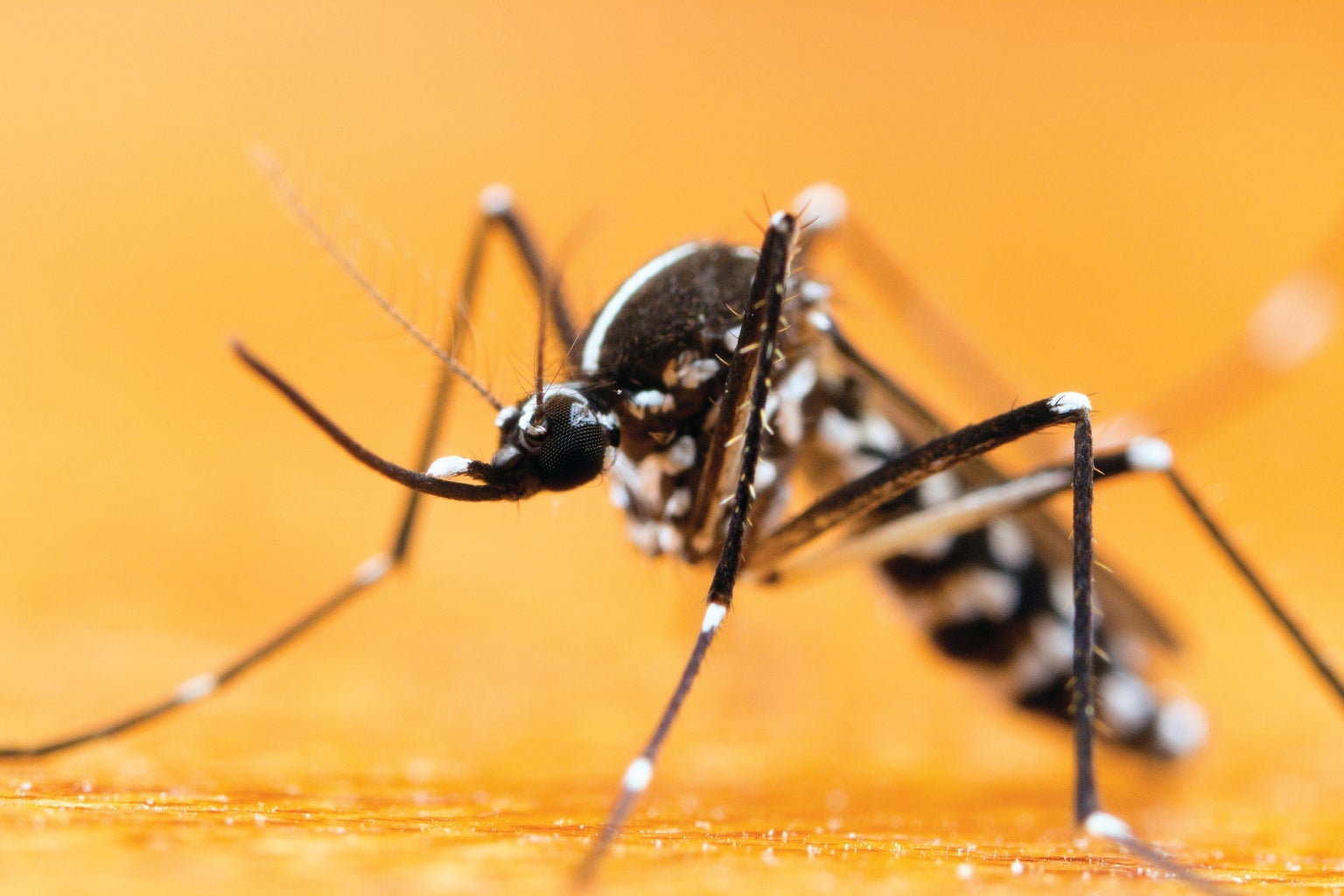Low-Income Baltimore Blocks Host Bigger, More Dangerous Mosquitoes

Over the past five decades mosquito populations in parts of the U.S. have skyrocketed by a factor of 10—a situation with worrying implications for the spread of diseases such as West Nile virus, dengue and chikungunya. And some places are apparently more vulnerable than others. A new study published last October in the Journal of Medical Entomology found that in Baltimore, low-income neighborhoods bear the biggest burden: they have not only more mosquitoes but also larger ones, which often survive longer. The problem most likely is rooted in the fact that Baltimore has nearly 17,000 abandoned buildings, which are concentrated in economically disadvantaged areas and serve as convenient mosquito-breeding zones. To effectively combat mosquitoes and the diseases they carry, the study suggests, cities will need to account for urban infrastructure.
Researchers at the Cary Institute of Ecosystem Studies in Millbrook, N.Y., and the University of Maryland trapped adult Aedes albopictus (better known as Asian tiger mosquitoes) in five Baltimore residential neighborhoods over three years. This species, introduced to the U.S. in 1987, is now the most common in many American cities. When the researchers measured the mosquitoes‘ wing lengths, a proxy for body size, they found that the insects grew larger in lower-income blocks. Bigger mosquitoes are not just a bigger annoyance: the larger they are, the longer they tend to live—and the more times each one can bite. Because mosquitoes have to bite at least once to become infected with disease-causing microorganisms and again to pass them on to people, bigger mosquitoes could pose higher disease risks. Larger mosquitoes also lay more eggs, setting the stage for higher numbers later on. Senior study author Shannon LaDeau, a Cary Institute disease ecologist, and her colleagues found in a 2013 study that low-income blocks in Baltimore were 72 percent more likely to have Asian tiger mosquitoes than high-income blocks were and showed higher mosquito densities.
The researchers say low-income blocks produce more and larger mosquitoes because they have more abandoned buildings than affluent blocks do and are more heavily littered with discarded containers that collect standing water. And water that pools in degraded buildings is protected by shade—which helps mosquitoes grow larger. Some cities‘ well-intentioned efforts to plant trees in low-income blocks may worsen the problem: trees and shrubs not only shade outdoor breeding pools but also shed leaves into the water and feed the mosquito larvae, helping them grow bigger.
“There appears to be a complex pathway between low-income neighborhoods, the types of habitats in which mosquito juveniles develop in those neighborhoods, and the resulting size of adult mosquitoes potentially capable of transmitting disease to humans,” says Brian Allan, an integrative biologist at the University of Illinois at Urbana-Champaign, who was not involved in the study.
Fortunately, mosquito-borne diseases are not a massive problem in the U.S. for now. From January through October 2019, the Centers for Disease Control and Prevention reported 777 cases of West Nile virus and 614 cases of dengue (and most of the latter occurred in people infected outside the U.S.). But climate change could worsen the country’s disease landscape by broadening habitats and lengthening the time every summer that mosquitoes can breed and survive.
“The longer you have each season for [a disease] to be introduced and take off, the more likely it is to happen,” LaDeau says. If mosquito-borne diseases start to spread more widely in U.S. cities, the new study indicates low-income neighborhoods could be hit especially hard.
These findings have implications that stretch across the country. A 2018 report by the Massachusetts-based nonprofit Lincoln Institute of Land Policy says the number of unoccupied homes in the U.S. rose from 9.5 million to 12 million between 2005 and 2010, possibly because of the lingering effects from the 2008 housing crisis. The number has since declined a bit, but it is still far higher than it was in 2005. Vacant land areas are another problem: Philadelphia alone has approximately 40,000 such parcels concentrated in poor neighborhoods. And low-income areas affected by natural disasters such as hurricanes can also become mosquito-breeding grounds. Research has shown that disasters disproportionately damage low-income housing, which also tends to be rebuilt slowly, if at all.
Cities may, then, need to focus more mosquito-control efforts on these areas. Urban health departments typically educate homeowners about the importance of emptying water out of outdoor containers such as pet bowls, as well as trash and recycling bins. But nobody empties such receptacles in or around abandoned buildings, and so far most municipalities have not been willing to take on the job. “It is something that is fairly difficult for a city to address because it’s really expensive to go into private properties and clean them up,” says Dina Fonseca, a molecular ecologist at Rutgers University, who was not involved in the study. Yet if these properties become breeding grounds not only for annoying mosquitoes but also for dangerous vector-borne diseases, officials‘ calculus may need to shift.
If you want to read more science articles, you can visit our science category.
if you want to watch movies go to Film.BuradaBiliyorum.Com for Tv Shows Dizi.BuradaBiliyorum.Com, for forums sites go to Forum.BuradaBiliyorum.Com .




